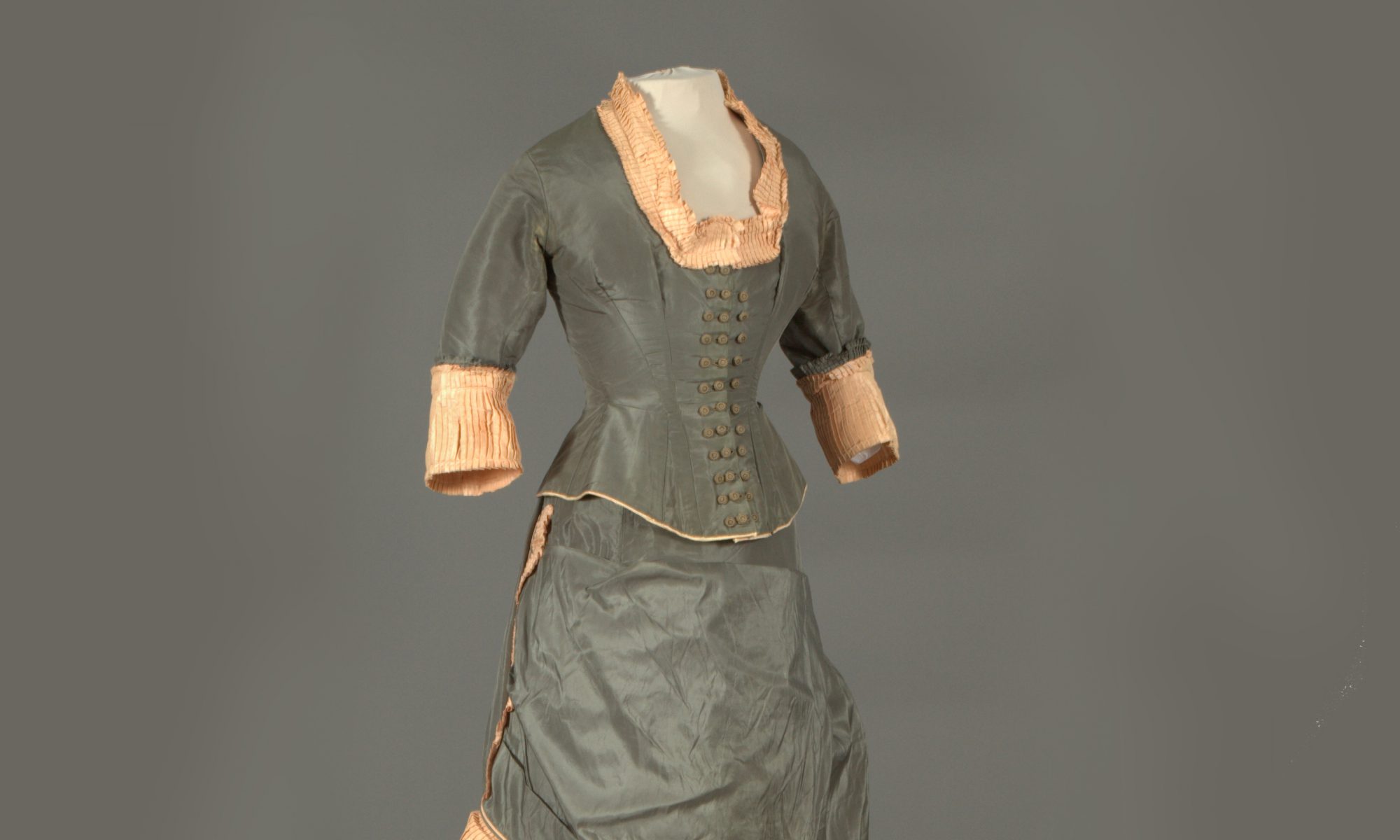While researching the discussion over a dress code at early Vassar, I began by reading the earliest College Catalogues. In the catalogues from the first 15 years of the College, I have found that the original language on dress was written in a section entitled, “The College Family” with subsections on “Moral and Religious Education” and “Society and Dress.” In particular, the ladies and their families were instructed thus:
“It is especially desired that the dress of the students shall be simple and inexpensive. Simplicity saves time and thought and money, which to a scholar are precious for higher uses. As exercise will mostly be taken in the College grounds, city walking-dresses are not required, but rather such clothing as will not be injured by active sports and vigorous education….Each student should be provided with an umbrella, thick boots, india-rubber over-shoes, and water-proof cloak; and a warm dressing-gown is indispensable in case of sickness. Students much bring their own towels, napkins, and napkin-rings. Every article belonging to a student should be distinctly marked with her full name.”
This language remained for a considerable period of time. In 1872-73, the name of the subsection changed to “Social and Domestic Regulations” with paragraphs on “Moral and Religious Education” and “Health and Physical Training” following. The entire section was also retitled “The College Home.”
The language on dress and the specifics of what to bring were removed in the 1875-76 catalogue—perhaps the College realized it was a losing battle.
This is a pretty interesting start, and reminds me of something that Dean Emeritus Colton Johnson once told me. This experiment of a college for women was really one of the first things that asked families to let their unmarried daughters live away from home, and because of that the College felt a responsibility to make families feel that they could safely make that choice (because the last thing anyone wants is to send America’s daughters right off the cliffs of moral turpitude). In order to do this, Vassar had to become one of the very first residential colleges as it could not expect ladies to live in boarding houses like the men of universities did. The language of the “College Family” reflects this need as the College really was striving to recreate the safe, family environment away from home.
The commitment to simple dress may have been both to avoid distraction and any vices that come with fancier dress, but it may also have been an attempt to create a level appearance for students coming from a variety of backgrounds.


Hmm, interesting that the clothing stipulations appear and disappear throughout school history. I looked through catalogs from the early 30s and the only sections they had were about admissions policy, grading policy, and school history.
I wonder what leads the school to impose such “sumptuary laws,” and what time periods in which they reappeared? Could it have been during times when female consumption was expected and encouraged (as it was in the 50s?)
It’s also amusing to see how the earliest catalogs warn students to dress simply. Would the same have held true for men’s colleges? And why is it that dress is associated with frivolity?
“The language on dress and the specifics of what to bring were removed in the 1875-76 catalogue—perhaps the College realized it was a losing battle.”
Great post – I noticed too that the specifics of dress are removed and then put back in at different points during Vassar’s history in my research. It’s interesting too, because so many of the same themes are recurrent in Vassar’s history – even when I’m looking at dress at the mid-century, the college was still hoping to instil in prospective students that they should expect to “discover a reality” rather than an elaborate, mythical place of luxury.
There was also the student written guidebooks – “Coming to Vassar,” which then became “So, You’re Coming to Vassar.” And these were filled with the student viewpoint – they’ve been a great resource for my book research and it’s been wonderful meeting the women who wrote them! And sure, the safety aspect of sending daughters away to Vassar played a part in these catalogues stressing becoming a community and family – I’m actually looking at these aspects of undergraduate life right now. I’m pretty sure that by the mid 20th c – there was a section in these booklets called “Setting up Housekeeping,” which gave advice on making a dorm a home. Actually, when did the “Coming to Vassar” editions start, does anyone know?
Thanks and keep up the great work – hope to meet some of you soon!
– RCT